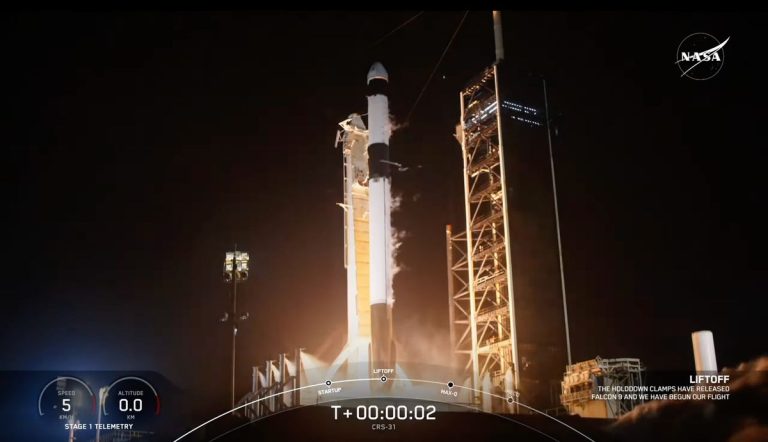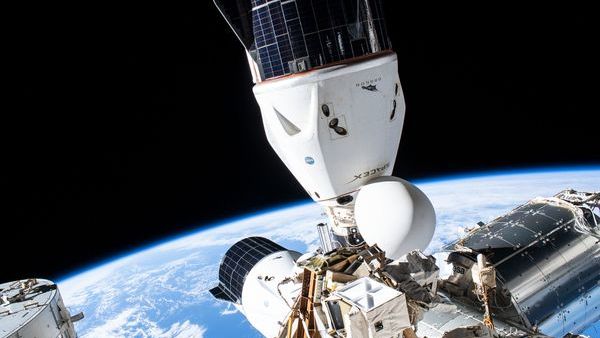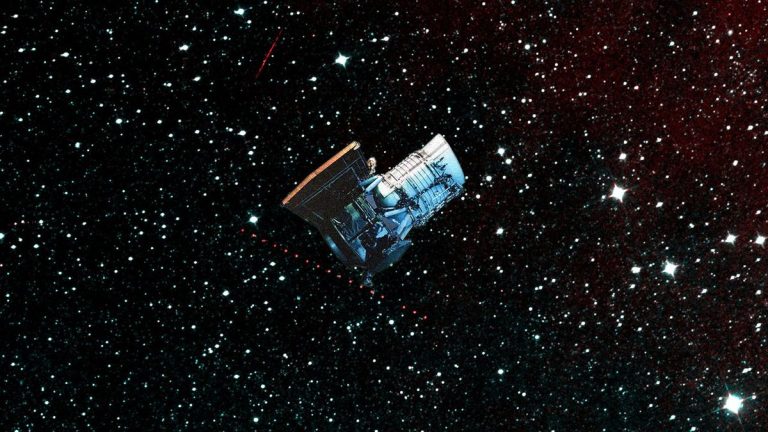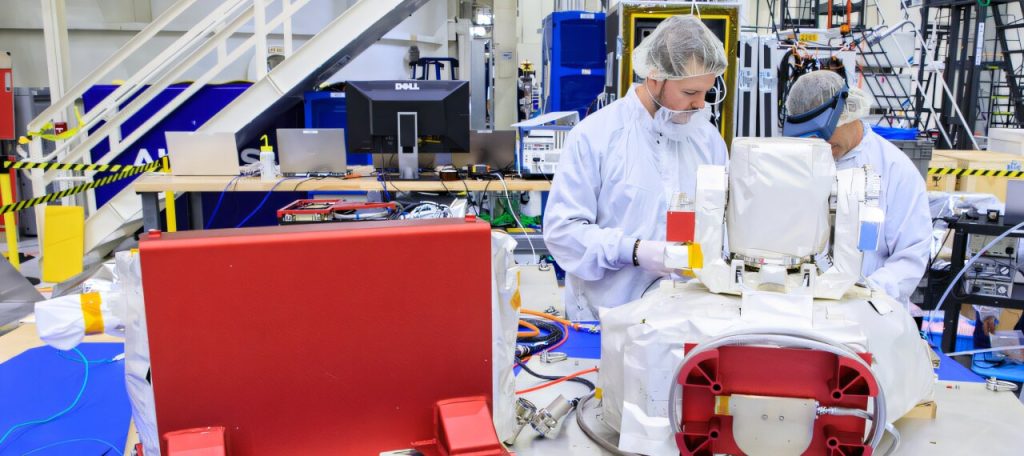
Communications user terminal prepares for historic moon flyby (Image Credit: Phys.org)
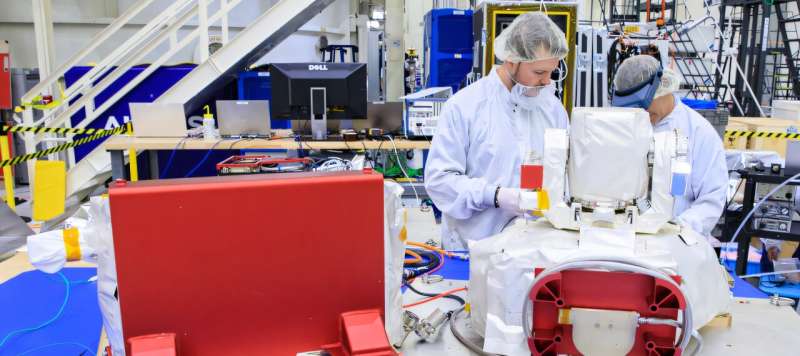
In 1969, Apollo 11 astronaut Neil Armstrong stepped onto the moon’s surface—a momentous engineering and science feat marked by his iconic words, “That’s one small step for a man, one giant leap for mankind.” Three years later, Apollo 17 became NASA’s final Apollo mission to land humans on the brightest and largest object in our night sky. Since then, no humans have visited the moon or traveled past low Earth orbit (LEO), largely because of shifting politics, funding, and priorities.
But that is about to change. Through NASA’s Artemis II mission, scheduled to launch no earlier than September 2025, four astronauts will be the first humans to travel to the moon in more than 50 years. In 2022, the uncrewed Artemis I mission proved the ability of NASA’s new spacecraft Orion—launched on the new heavy-lift rocket, the Space Launch System—to travel farther into space than ever before and return safely to Earth.
Building on that success, the 10-day Artemis II mission will pave the way for Artemis III, which aims to land astronauts on the lunar surface, with the goal of establishing a future lasting human presence on the moon and preparing for human missions to Mars.
One big step for lasercom
Artemis II will be historic not only for renewing human exploration beyond Earth, but also for being the first crewed lunar flight to demonstrate laser communication (lasercom) technologies, which are poised to revolutionize how spacecraft communicate. Researchers at MIT Lincoln Laboratory have been developing such technologies for more than two decades, and NASA has been infusing them into its missions to meet the growing demands of long-distance and data-intensive space exploration.
As spacecraft push farther into deep space and advanced science instruments collect ultrahigh-definition (HD) data like 4K video and images, missions need better ways to transmit data back to Earth. Communication systems that encode data onto infrared laser light instead of radio waves can send more information at once and be packaged more compactly while operating with less power.
Greater volumes of data fuel additional discoveries, and size and power efficiency translate to increased space for science instruments or crew, less expensive launches, and longer-lasting spacecraft batteries.
For Artemis II, the Orion Artemis II Optical Communications System (O2O) will send high-resolution video and images of the lunar surface down to Earth—a stark contrast to the blurry, grainy footage from the Apollo program. In addition, O2O will send and receive procedures, data files, flight plans, voice calls, and other communications, serving as a high-speed data pipeline between the astronauts on Orion and mission control on Earth.
O2O will beam information via lasers at up to 260 megabits per second (Mbps) to ground optical stations in one of two NASA locations: the White Sands Test Facility in Las Cruces, New Mexico, or the Jet Propulsion Laboratory’s Table Mountain Facility in Wrightwood, California. Both locations are ideal for their minimal cloud coverage, which can obstruct laser signals as they enter Earth’s atmosphere.
At the heart of O2O is the Lincoln Laboratory–developed Modular, Agile, Scalable Optical Terminal (MAScOT). About the size of a house cat, MAScOT features a 4-inch telescope mounted on a two-axis pivoted support (gimbal), and fixed back-end optics.
The gimbal precisely points the telescope and tracks the laser beam through which communications signals are emitted and received, in the direction of the desired data recipient or sender. Underneath the gimbal, in a separate assembly, are the back-end optics, which contain light-focusing lenses, tracking sensors, fast-steering mirrors, and other components to finely point the laser beam.
A series of firsts
MAScOT made its debut in space as part of the laboratory’s Integrated Laser Communications Relay Demonstration (LCRD) LEO User Modem and Amplifier Terminal (ILLUMA-T), which launched to the International Space Station (ISS) in November 2023.
After a few weeks of preliminary testing, ILLUMA-T transmitted its first beam of laser light to NASA’s LCRD satellite in geosynchronous (GEO) orbit 22,000 miles above Earth’s surface. Achieving this critical step, known as “first light,” required precise pointing, acquisition, and tracking of laser beams between moving spacecraft.
Over the following six months, the laboratory team performed experiments to test and characterize the system’s basic functionality, performance, and utility for human crews and user applications. Initially, the team checked whether the ILLUMA-T-to-LCRD optical link was operating at the intended data rates in both directions: 622 Mbps down and 51 Mbps up. In fact, even higher data rates were achieved: 1.2 gigabits per second down and 155 Mbps up.
“This first demonstration of a two-way, end-to-end laser communications relay system, in which ILLUMA-T was the first LEO user of LCRD, is a major milestone for NASA and other space organizations,” says Bryan Robinson, leader of the laboratory’s Optical and Quantum Communications Group. “It serves as a precursor to optical relays at the moon and Mars.”
After the relay was up and running, the team assessed how parameters such as laser transmit power, optical wavelength, and relative sun angles impact terminal performance. Lastly, they contributed to several networking experiments over multiple nodes to and from the ISS, using NASA’s delay/disruption tolerant networking protocols.
One landmark experiment streamed 4K video on a round-trip journey from an airplane flying over Lake Erie in Ohio, to the NASA Glenn Research Center in nearby Cleveland, to the NASA White Sands Test Facility in New Mexico, to LCRD in GEO, to ILLUMA-T on the ISS, and then back. In June 2024, ILLUMA-T communicated with LCRD for the last time and powered off.
“Our success with ILLUMA-T lays the foundation for streaming HD video to and from the moon,” says co-principal investigator Jade Wang, an assistant leader of the Optical and Quantum Communications Group. “You can imagine the Artemis astronauts using videoconferencing to connect with physicians, coordinate mission activities, and livestream their lunar trips.”
Moon ready
The Artemis II O2O mission will employ the same overall MAScOT design proven on ILLUMA-T. Lincoln Laboratory delivered the payload to NASA’s Kennedy Space Center for installation and testing on the Orion spacecraft in July 2023.
“Technology transfer to government is what Lincoln Laboratory does as a federally funded research and development center,” explains lead systems engineer Farzana Khatri, a senior staff member in the Optical and Quantum Communications Group.
“We not only transfer technology, but also work with our transfer partner to ensure success. To prepare for O2O, we are leveraging lessons learned during ILLUMA-T operations. Recently, we conducted pre-mission dry runs to enhance coordination among the various teams involved.”
In August 2024, the laboratory completed an important milestone for the O2O optical terminal: the mission readiness test. The test involved three phases.
In the first phase, they validated terminal command and telemetry functions. While laboratory-developed ground software was directly used to command and control ILLUMA-T, for O2O, it will run in the background and all commands and telemetry will be interfaced through software developed by NASA’s Johnson Space Center Mission Control Center.
In the second phase, the team tested different user applications, including activating some of Orion’s HD cameras and sending videos from Cape Canaveral to Johnson Space Center as a mock-up for the actual space link. They also ran file transfers, video conferencing, and other operations on astronaut personal computing devices.
In the third phase, they simulated payload commissioning activities, such as popping the latch on the optical hardware and moving the gimbal, and conducting ground terminal operations.
“For O2O, we want to show that this optical link works and is helpful to astronauts and the mission,” Khatri says. “The Orion spacecraft collects a huge amount of data within the first day of a mission, and typically these data sit on the spacecraft until it lands and take months to be offloaded.
“With an optical link running at the highest rate, we should be able to get data down to Earth within a few hours for immediate analysis. Furthermore, astronauts can stay in touch with Earth during their journey, inspiring the public and the next generation of deep-space explorers, much like the Apollo 11 astronauts who first landed on the moon 55 years ago.”
Provided by
Massachusetts Institute of Technology
This story is republished courtesy of MIT News (web.mit.edu/newsoffice/), a popular site that covers news about MIT research, innovation and teaching.
Communications user terminal prepares for historic moon flyby (2024, November 4)
retrieved 4 November 2024
from https://phys.org/news/2024-11-communications-user-terminal-historic-moon.html
part may be reproduced without the written permission. The content is provided for information purposes only.


